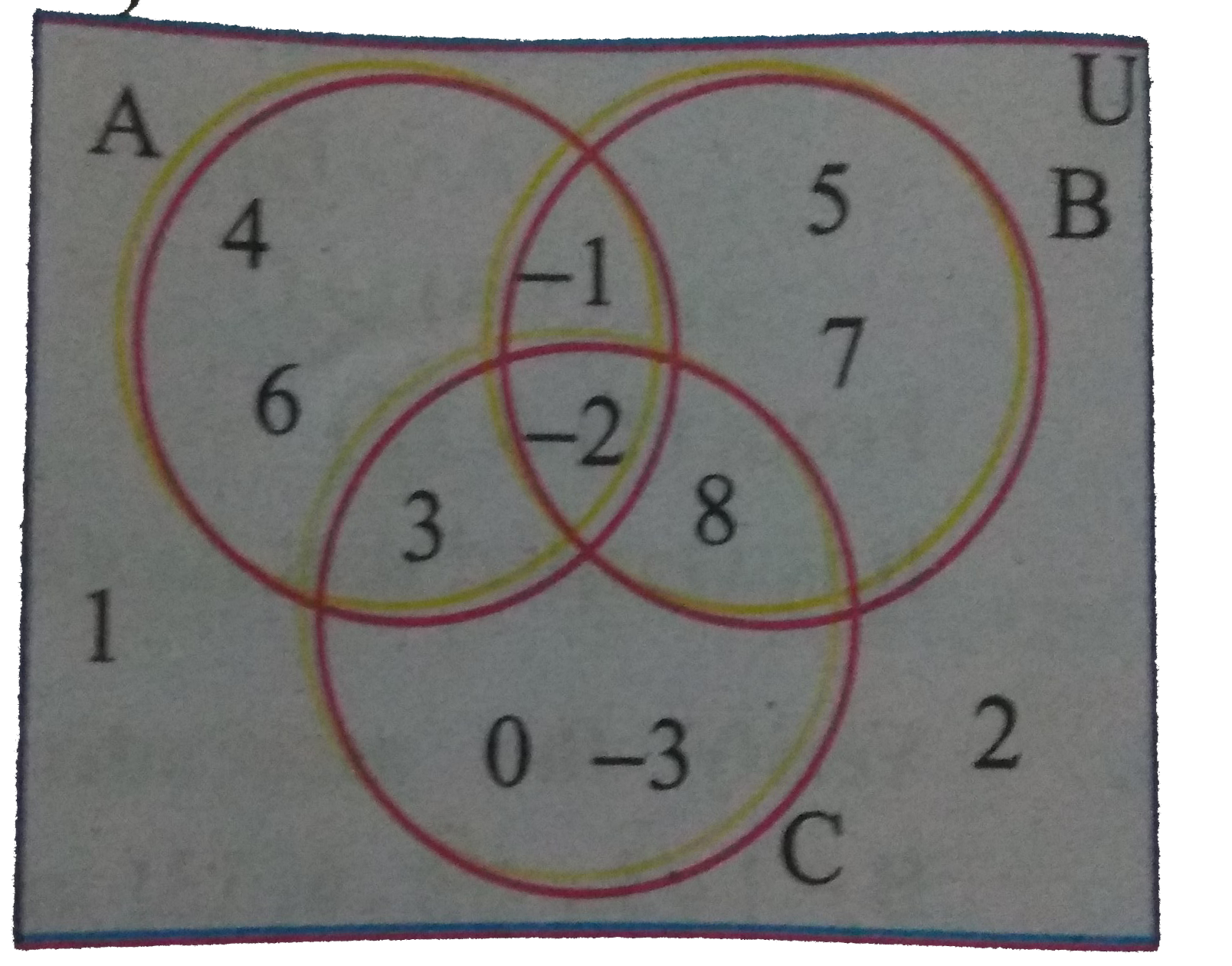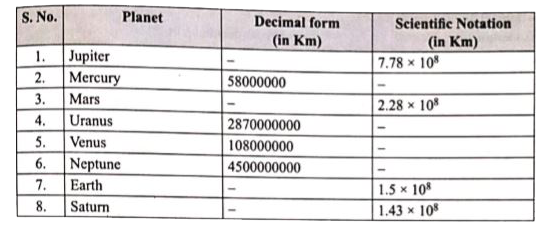Verify n(A∪B∪C)=n(A)+n(B)+n(C)−n(A∩B)−n(B∩C)−n(A∩C)+n(A∩B∩C) for the following sets.
(i) A{a, c, e, f, h}, B = {c, d, e, f} and C = {a, b, c, f}
(ii) A = {1, 3, 5} B = {2, 3, 5, 6} and C = {1, 5, 6, 7}.Solution in Tamil
Step by step video & image solution for Verify n(AcupBcupC)=n(A)+n(B)+n(C)-n(AcapB)-n(BcapC)-n(AcapC)+n(AcapBcapC) for the following sets. (i) A{a, c, e, f, h}, B = {c, d, e, f} and C = {a, b, c, f} (ii) A = {1, 3, 5} B = {2, 3, 5, 6} and C = {1, 5, 6, 7}. by Maths experts to help you in doubts & scoring excellent marks in Class 9 exams.
Updated on:21/07/2023Topper's Solved these Questions
- SET LANGUAGEBOOK - FULL MARKSCHAPTER - SET LANGUAGEEXERCISE - Exercise 1.7 (MCQ)
20 Videos
- SET LANGUAGEBOOK - FULL MARKSCHAPTER - SET LANGUAGEEXERCISE - Text Book Activities
4 Videos
- SET LANGUAGEBOOK - FULL MARKSCHAPTER - SET LANGUAGEEXERCISE - Exercise 1.5
11 Videos
- REAL NUMBERSBOOK - FULL MARKSCHAPTER - REAL NUMBERSEXERCISE - Text Book Activity (Activity 3:)
1 Videos
- STATISTICSBOOK - FULL MARKSCHAPTER - STATISTICSEXERCISE - Assignment (Answer the following question)
10 Videos
Similar Questions
Which of the following is correct?
View SolutionDiscuss and give as many examples of collections from your daily life situations, which are sets and which are not sets.
View SolutionUsing the adjacent venn diagram, find the following sets :

(i) A - B
(ii) B - C
(iii) A'∪B'
(iv) A'∩B'
(v) (B∪C)'
(vi) A−(B∪C)
(vii) A−(B∩C)
View SolutionThe following list shows the mean distance of the plants of the solar system from the Sun. Complete the following table. Then arrange in order of magnitude starting with the distance of the planet closest to the Sun.

View SolutionIf the mean of 6,x, 4 and 12 is 8 then find the value of x.
View SolutionLet A and B be two sets such that n(A)=5 and n(B)=2, if a, b, c, d, e are distinct and (a,2), (b,3), (c,2), (d,3), (e,2) are in A×B , find A and B.
View Solutionif a,b,c,d,e and f are six real numbers such that a+b+c=d+e+f a2+b2+c2=d2+e2+f2 and a3+b3+c3=d3+e3+f3 , prove by mathematical induction that an+bn+cn=dn+en+fn∀n∈N.
View SolutionIf n(A)=10,n(B)=6andn(C)=5 for three disjoint sets A,B,C then n(A∪B∪C) equals
View SolutionLet A={b,d,e,g,h}andB={a,e,c,h} verify that n(A−B)=n(A)−n(A∩B)
View SolutionVerify n(A∪B∪C)=n(A)+n(B)+n(C)−n(A∩B)−n(B∩C)−n(A∩C)+n(A∩B∩C) for the following sets.
(i) A{a, c, e, f, h}, B = {c, d, e, f} and C = {a, b, c, f}
(ii) A = {1, 3, 5} B = {2, 3, 5, 6} and C = {1, 5, 6, 7}.
View SolutionLet A = {b, d, e, g, h} and B = {a, e, c, h} verify that n(A−B)=n(A)−n(A∩B)
View SolutionVerify n(A∪B∪C)=n(A)+n(B)+n(C)−n(A∩B)−n(B∩C)−n(A∩C)+n(A∩B∩C) for the following sets A = {1, 3, 5, 6, 8}, B = {3, 4, 5, 6) and C = {1, 2, 3, 6}
View SolutionIf A , B and C are three non - empty finite sets such that n (A) =19 , n (B) = 15 , n (C ) =17, n(∩B)=11,n(B∩C)=6,n(C∩A)=7andn(A∩B∩C)=5. Also n (U) =50.
(i) n(A∩Bc∩Cc)
(ii) n(B∩Cc∩Ac)
(iii) n(C∩Ac∩Bc)
(iv) n(C∩B∩Cc)
(v) n(B∩C∩Ac)
(vi) n(C∩A∩Bc)
(vii) n(A∪B∪C)
(viii) n((A∪B∪C)c).
View SolutionFor any three sets A,B C, prove that :
n(A∪B∪C)=[n(A)+n(B)+n(C)+n(A∩B∩C)]−[n(A∩B)+n(B∩C)+n(A∩C)].
View Solution(n(A ∪ B ∪ C))=n(A)+n(B)+n(C)-n(A ∩ B)-n(B ∩ C)-n(A ∩ C)+n(A ∩B∩ C) என்பதைக் கீழ்க்காணும் கணங்களுக்குச் சரிபார்க்க ? A{a,c,e,f,h},B={c,d,e,f}மற்றும் C={a,b,c,f}
View SolutionIf a:b=c:d=e:f then (pa+qc+re):(pb+qd+rf) is equal to
View Solution
